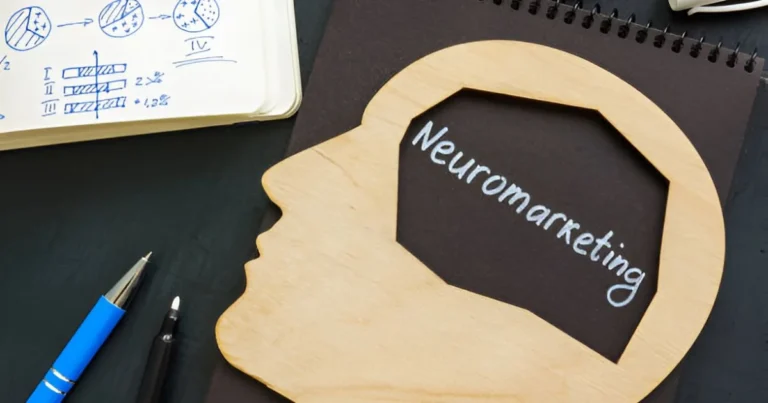Proust’s summer: When a bite of cake unlocks a lifetime
One winter day, in a simple cup of tea, a writer rediscovers the past. As soon as the madeleine touches his lips, a wave of sensations overwhelms him: Sundays in Combray, Aunt Léonie’s voice, warm light on the walls, and the buried scents of a lost summer resurface with stunning intensity. This memory, long inaccessible to conscious will, returns not as a faint mental image but as a vivid, embodied, immersive experience.
In In Search of Lost Time, Marcel Proust describes this resurgence with a precision that borders on phenomenology. This iconic moment has transcended literature, foreshadowing what contemporary neuroscience is only beginning to unravel. Why can a taste, a smell, or a texture revive entire chapters of our lives more powerfully and faithfully than deliberate recall? What happens in the brain when a memory floods us without warning, feeling more real than the present?
What Proust conveyed through language, modern research now seeks to explain with brain imaging and cognitive models. Far from being anecdotal, these involuntary memories play a central role in our relationship to the past. They reveal how sensory experiences, especially in summer, a season rich in vivid smells, intense flavors, and diffuse sensations, become deeply embedded in autobiographical memory.
The treasure chest of memories
Some memories are like buried treasures, lying dormant in a corner of the brain until a sensory cue, an aroma, a taste, a tactile sensation, unlocks them. This ‘chest’ opens easily when a sensory and emotional circuit is spontaneously activated. Autobiographical memory, the repository of these personally significant scenes, is part of declarative memory but stands out for its vividness and sense of re-experiencing.
This ability to reconstruct an entire memory from a single sensation does not depend solely on perceptual intensity but on an ongoing selection process performed by the brain. Not all experiences become lasting memories. The brain filters continuously, based on subjective evaluation heavily influenced by emotion. When emotional intensity is high, a key brain structure, the amygdala, comes into play. It assesses the emotional weight of an event (pleasure, fear, surprise) and relays this information to the hippocampus, which handles memory consolidation. The stronger the interaction between these regions, the more deeply the memory is stored.
This dynamic explains why emotionally charged summer scenes can remain vivid for decades. A single sensory cue, sun lotion, cicada song, the warmth of sun on skin, can reactivate the entire experience. Neuroscience shows that when an autobiographical memory is reactivated, brain regions tied to sensory perception, like the olfactory bulb or auditory cortex, become active alongside memory areas like the hippocampus and medial prefrontal cortex. This coupling explains the richness and realism of such memories: they are not merely recalled, they are mentally replayed, as if the body were reliving them.
Autobiographical memory thus functions as a selective system, organized around bodily responses. Summer, with its density of sensory input, acts as a memory amplifier. And sometimes, much later, in the quiet of winter, a single bite can unlock the chest, and summon a forgotten world.
A shortcut to the past: olfactory and gustatory imprints
Among the many gateways to memory, some are more powerful than others. Smell and taste occupy a special place. Unlike other senses, olfactory information bypasses the thalamus and connects directly to the limbic system, particularly the amygdala and hippocampus. This unique anatomy forges an immediate link between perception and emotion, making it easier to spontaneously revive distant memories, often from childhood. This evocative power highlights the distinct role olfactory memory plays in autobiographical reconstruction.
Not all sensory channels are created equal when it comes to memory. The scent of a dish, the taste of a summer fruit, or the fragrance of a childhood home can serve as potent keys, unlocking vivid scenes from the past. In Proust’s case, as in many daily experiences, it is precisely these olfactory and gustatory sensations that most powerfully open the “memory chest.”
When summer strengthens the memory trace
The power of sensory cues to trigger memory is also tied to the context in which they are encoded, particularly summer. Beyond specific stimuli like smells or tastes, the season itself acts as a memory enhancer. Warm weather, prolonged daylight, and bodily relaxation all provide ideal conditions for embedding experiences into long-term memory.
This seasonal influence was explored by Swedish psychologist Knez from the University of Gothenburg, a specialist in environmental psychology. In a study involving adults, participants were asked to evaluate personal memories based on the context in which they were formed. The findings showed that episodes associated with warm, bright environments were perceived as more pleasant, detailed, and memorable than those linked to cold or dark settings. This gap can partly be explained by the effect of natural light on neurochemical regulation. Extended sunlight exposure boosts serotonin production, a neuromodulator involved in mood, attention, and memory. At the same time, summer’s mild temperatures promote physical relaxation, which facilitates efficient memory encoding. In this way, seasonal environments do more than color our memories, they shape how those memories are stored in the brain.
From madeleines to memory labs: a scientific echo of Proust
Proust’s paradigm has inspired experimental approaches that attempt to replicate spontaneous autobiographical memory retrieval in the lab. Research confirms that sensory stimulation, especially smells and tastes, engages specific neural networks that promote vivid, emotional, and context-rich recollection. This type of memory, called involuntary memory, complements the more familiar form of voluntary memory and opens new avenues in cognitive science. In neurodegenerative disorders, early alterations in the sense of smell are now recognized as sensitive markers of cognitive decline, particularly in Alzheimer’s disease. A loss of olfaction, whether partial or complete, often precedes memory impairments and reflects damage to limbic circuits involved in episodic memory. However, certain familiar odors, when still perceived, may retain a residual evocative power and are used in sensory stimulation programs designed to trigger emotional reminiscence and reinforce patients’ sense of identity.
In the field of post-traumatic stress disorders, such as PTSD, involuntary memory takes on a different aspect: that of an uncontrolled, intrusive, and painful reactivation. A mere scent, taste, or texture can act as a “sensory trigger,” suddenly reviving a buried traumatic memory by bypassing the filters of voluntary recall. Gaining a deeper understanding of these mechanisms helps refine therapeutic strategies by identifying sensory triggers and developing approaches for desensitization or gradual sensory reintegration.
A century after Marcel Proust’s death, his literary intuitions are echoed in neuroscience labs. What his meandering sentences foresaw, neural circuits are beginning to confirm: our deepest memories don’t return when summoned, they surface when a simple sensation stirs the past without warning. Grasping these mechanisms opens the door to new ways of healing, preserving memory, and reconciling the present with a silent past.
References
Herz, R. S., & Schooler, J. W. (2002). A naturalistic study of autobiographical memories evoked by olfactory and visual cues: Testing the Proustian hypothesis. Memory & Cognition, 30(4), 512–522.
Chu, S., Downes, J.J. Proust nose best: Odors are better cues of autobiographical memory. Memory & Cognition 30, 511–518 (2002).
Franco, R., Garrigós, C., & Lillo, J. (2024). The Olfactory Trail of Neurodegenerative Diseases. Cells, 13.
Gisquet‑Verrier, P., & Riccio, D. C. (2024). Proust and involuntary retrieval. Frontiers in Psychology, 15, Article 1235098
Knez, I. (2006). Autobiographical memories for places. Environment and Behavior, 38(1), 83–106.
Levine, B., Svoboda, E., Hay, J. F., Winocur, G., & Moscovitch, M. (2004). Aging and autobiographical memory: Dissociating episodic from semantic retrieval. Journal of Cognitive Neuroscience, 14(3), 495–510

Sara Lakehayli
PhD, Clinical Neuroscience & Mental Health
Associate member of the Laboratory for Nervous System Diseases, Neurosensory Disorders, and Disability.
Professor, Graduate School of Psychology







